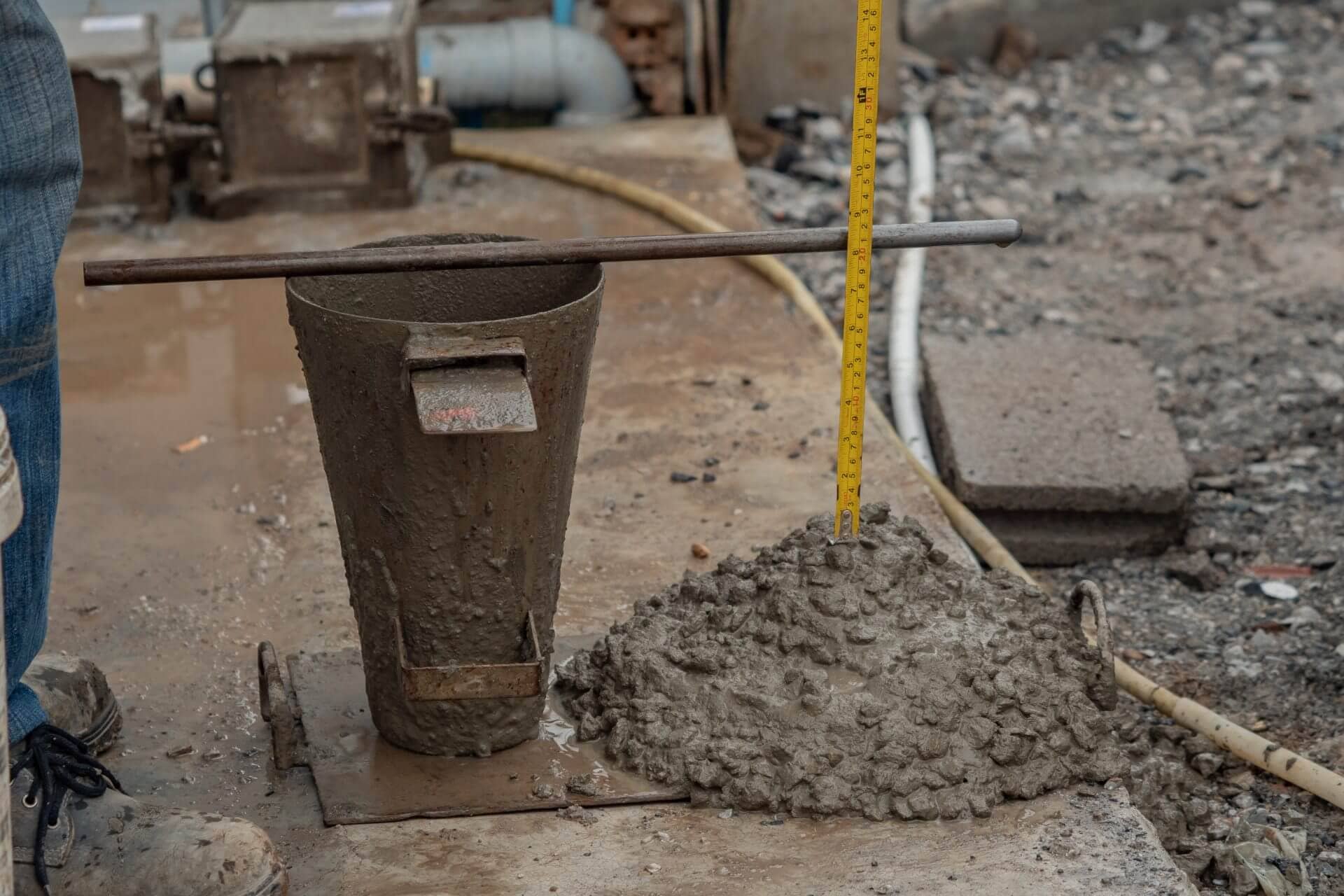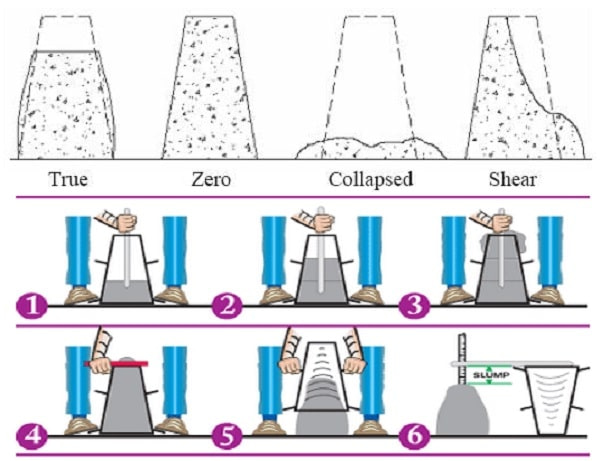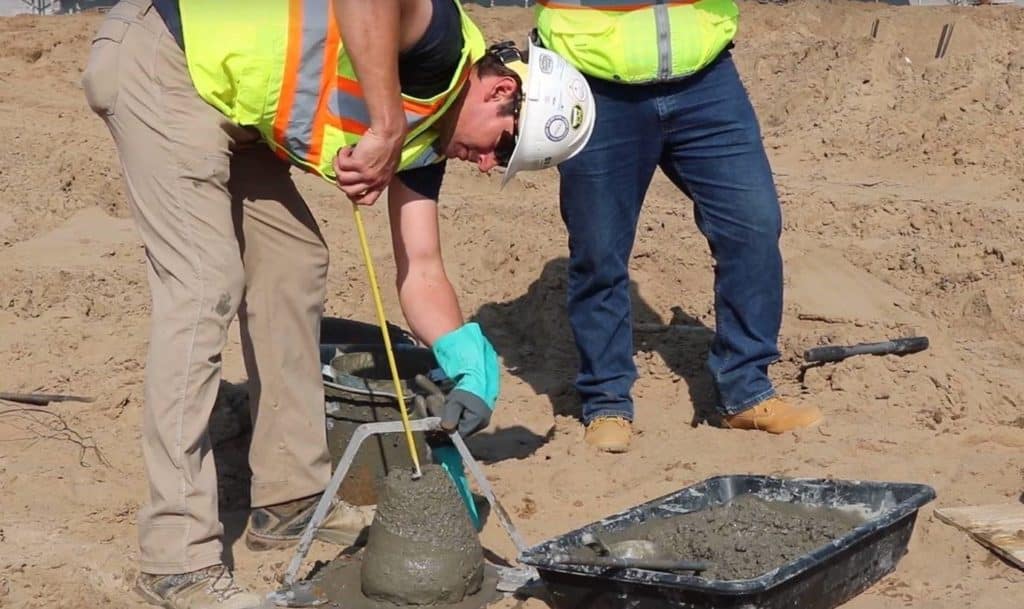Understanding Concrete Slump Tests: The Complete Guide
Slump tests are a cornerstone of any construction project involving concrete. These tests ensure the concrete slump is within an acceptable range, affecting everything from workability of concrete to structural integrity. Whether you’re a construction veteran or a beginner, understanding the concrete slump test is essential. And who better to guide you through this complex subject than Omega Ready Mix, a leader in the field?
What is a Concrete Slump Test?

When it comes to assessing the quality of fresh concrete, a slump test is often the standard test method. The concrete slump test provides valuable information on the workability of concrete. In simple terms, it measures the consistency of concrete before it sets. A slump cone test is performed using a metal mould shaped like the frustum of a cone. With top and bottom diameters that differ, the cone is filled with concrete immediately in three layers. Each layer is tamped using a steel rod to ensure compaction. The tamping rod is used in a uniform manner across the surface of the mould.
After filling and tamping, the slump cone is lifted, allowing the concrete to “slump,” or settle. The slump value is then measured in terms of vertical displacement. If the mix is too wet, the concrete simply subsides, known as a collapse slump. On the other hand, if the water-cement ratio is low, the concrete may hold its shape, known as a true slump. And sometimes, the concrete shears or slips sideways, known as a shear slump.
Knowing the difference between a shear slump, a collapse slump, and a true slump can save you from many problems, including excess concrete and other resource wastage. Accurate slump test results can make the difference between a construction project that runs smoothly and one rife with issues.
The Importance of the Slump Test in Construction

Concrete slump is more than just a number; it’s an indicator of the concrete’s quality and workability. A concrete slump chart can aid in interpreting the slump values, indicating whether the concrete mix is too dry or too wet. In normal reinforced concrete structures, the ideal slump value is usually specified to ensure the concrete’s performance meets the project’s standards.
Understanding the concrete slump meaning is crucial for achieving the desired properties in both fresh and hardened states. In a construction project, the slump test report guides the mixing, placement, and curing processes, effectively affecting the final structure’s integrity. For instance, a high workability mix may be ideal for road construction but not suitable for structures requiring light reinforcement.
In summary, the slump test is not just another bureaucratic requirement but a crucial test for ensuring the quality of your concrete. With Omega Ready Mix by your side, navigating the complexities of slump tests becomes far more straightforward.
Tools and Components

When you’re ready to conduct a slump test, the first thing you’ll need is a slump cone. This metallic mould has a top diameter smaller than the bottom diameter, resembling the frustum of a cone. The internal surface of the cone should be smooth to reduce surface friction during the test. Along with the slump cone, a base plate is also essential for the test. This serves as the surface on which the slump cone is placed.
Besides the slump cone and base plate, a steel tamping rod is used to compact the fresh concrete layers inside the cone. Make sure the steel rod is smooth and of the appropriate length. Some test equipment may also include a ruler or scale for measuring the slump value accurately.
Step-by-Step: Slump Cone Test Procedure

Performing a slump cone test is a straightforward process when you know what you’re doing. Before starting, make sure the slump cone and base plate are clean and free from old concrete or any other debris. First, place the base plate on a level surface. Then, hold the cone vertically over the base plate and start filling it with concrete. The concrete should be placed in three layers, each approximately one-third the height of the slump cone.
Each layer of fresh concrete should be tamped using a tamping rod 25 times in a uniform manner to compact it onto the underlying layer. Pay attention to the tamping to ensure subsequent layers are effectively compressed onto the previous layers. After the final layer is tamped, remove any excess concrete so that it is level with the top surface of the cone.
Next, lift the slump cone vertically with a smooth yet swift motion to allow the concrete to slump. Depending on the workability of the concrete and water-cement ratio, the concrete may show a true slump, shear slump, or collapse slump. Each of these outcomes tells you something important about the concrete’s characteristics.
Finally, measure the slump value, which is the difference between the height of the slump cone and the highest point of the slumped concrete. Record this in your slump test report for future reference.
Interpretation: Concrete Slump Chart and Values

Once you have your slump value, the next step is to interpret what this means for your construction project. A concrete slump chart is an excellent tool for this. Generally, a high slump value indicates a high workability mix, useful in specific scenarios like filling large areas with minor differences in elevation. On the other hand, a low slump value often means the mix is too dry and may require additional water or admixtures.
Slump cone test values also play a crucial role in ensuring the concrete meets the necessary quality standards. A low slump value could indicate that the concrete is not suitable for the intended application, while a high slump could suggest the concrete mix is too wet, affecting the structural integrity.
Understanding your slump test results through a concrete slump chart ensures you’re making the best decisions for your construction project. With Omega Ready Mix, you’re one step closer to mastering the science of concrete and making your project a resounding success.
Common Mistakes and Best Practices

Conducting a slump test might seem simple, but even minor errors can significantly skew the results. One common mistake is to tamper with the fresh concrete either too vigorously or not enough, affecting the slump value. The tamping rod should be used in a consistent, uniform manner to get an accurate read on the concrete’s workability.
Another frequent issue is lifting the slump cone too quickly or too slowly, which can lead to either a shear or collapse slump. The rate at which the cone slides from the concrete plays a critical role in determining the slump value.
You should also watch out for situations where the concrete collapses completely. This is a clear indicator that the mix is too wet and needs adjustment. On the other side of the spectrum, zero slump means the mix is too dry, and may require a rework of the water-cement ratio.
Adhering to the standard test method and following the exact slump cone test procedure will yield the most accurate results. Always refer to a slump test report to compare your findings and ensure you’re on the right track.
Legal and Safety Guidelines: BS EN 12350-2

Compliance with legal standards is crucial for any construction project. When conducting a slump test, following the guidelines stipulated in BS EN 12350-2 ensures that the test is performed to universally accepted standards. This code outlines the equipment, test procedures, and quality parameters that should be adhered to. Abiding by these standards guarantees the reliability of your slump test result and the structural integrity of your project.
Future of Slump Testing: Technological Advances
As with many industries, technology is changing the way we approach traditional practices like slump tests. Advances in test equipment and software can now provide real-time data, facilitating quicker decision-making and reducing delays in construction projects. Emerging technologies may even allow for automated slump tests in the future, further enhancing the precision and reliability of this essential test.
Conclusion: The Integral Role of Slump Testing in Construction
In the construction industry, where the stakes are high, and minor differences can have significant impacts, the slump test stands as a pillar of quality control. From understanding the concrete slump meaning to interpreting the nuances between shear slump and collapse slump, this test can be the deciding factor in the success of a construction project.
The Sustainability of Concrete: Why It Matters
The Sustainability of Concrete: Why It Matters Welcome to the...
Read MoreUnderstanding Concrete Slump Tests: The Complete Guide
Understanding Concrete Slump Tests: The Complete Guide Slump tests are...
Read MoreAn In-Depth Guide to Concrete Delivery Safety Procedures and Best Practices
Understanding the Complexity of Concrete Work Concrete work is a...
Read MoreHow to Select the Right Concrete Supplier in Calgary
How to Select the Right Concrete Supplier in Calgary Introduction...
Read More